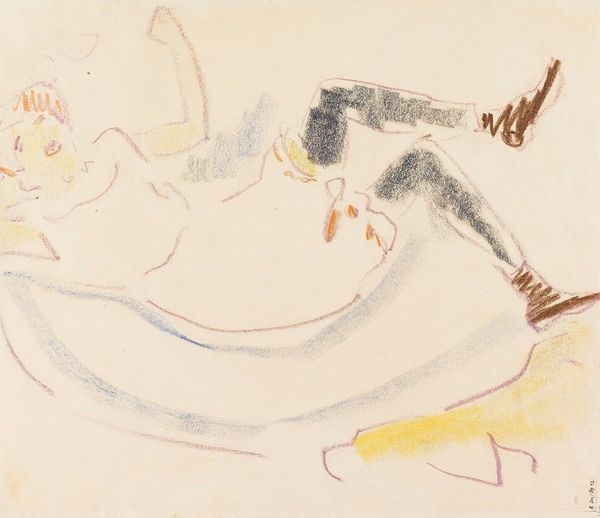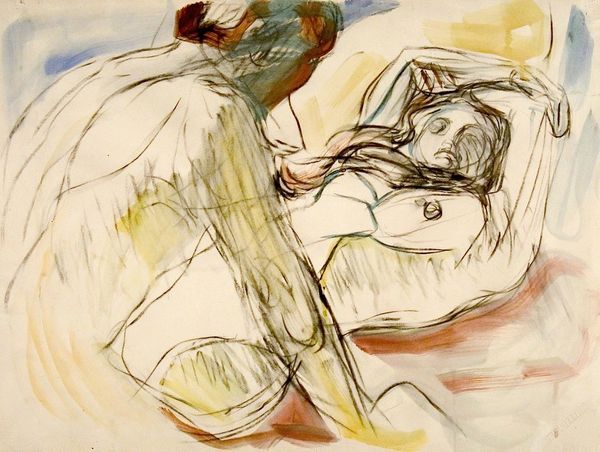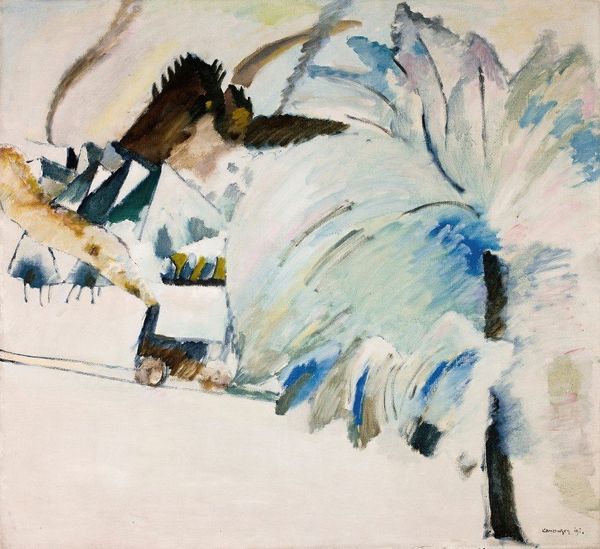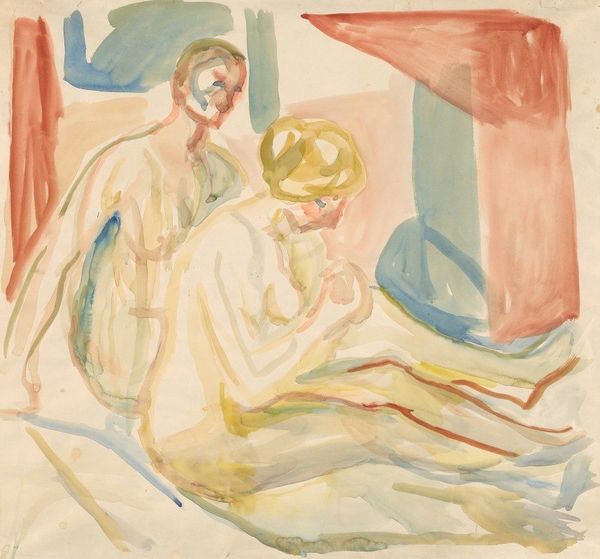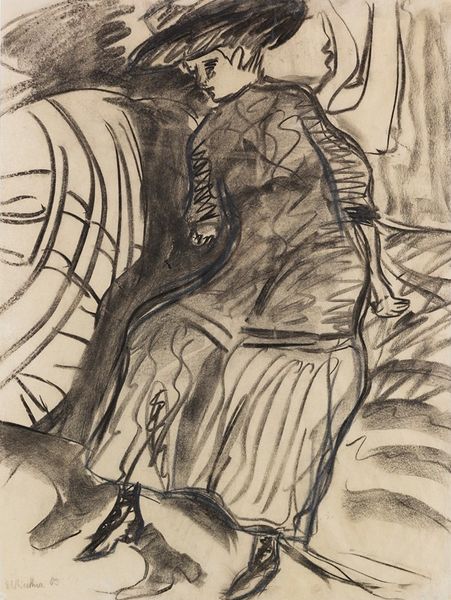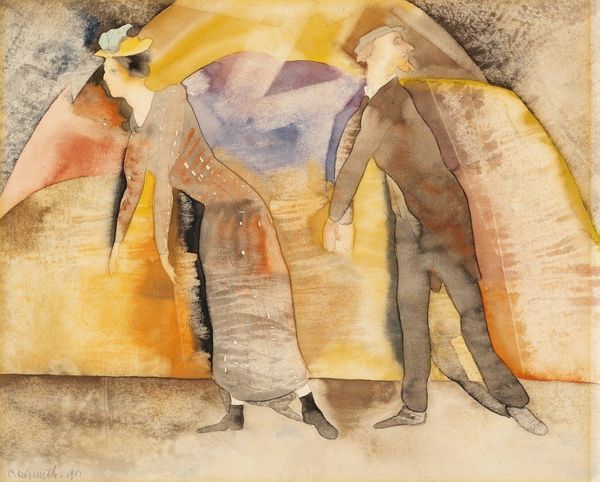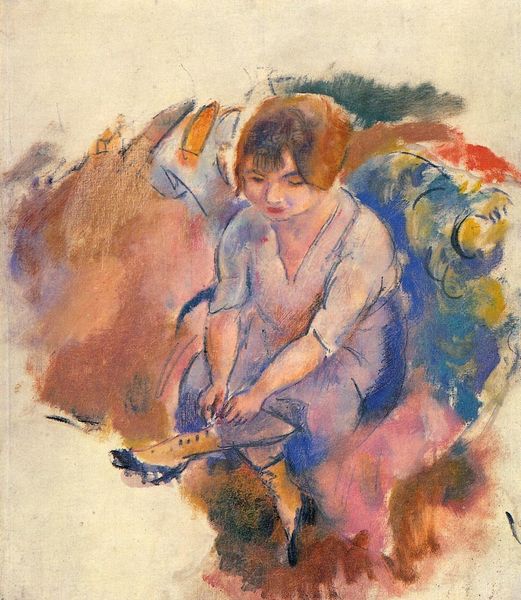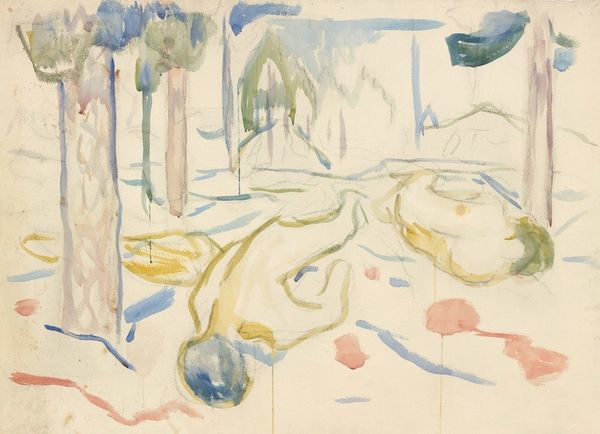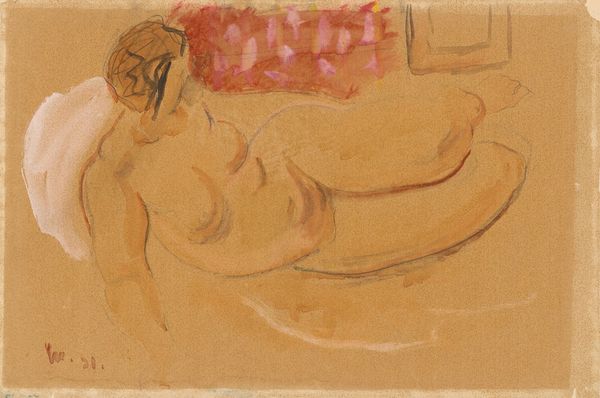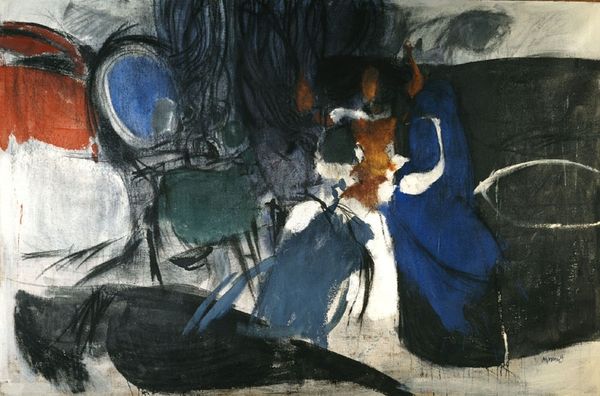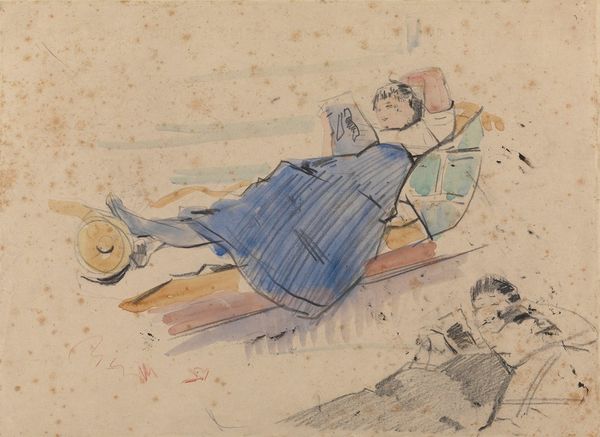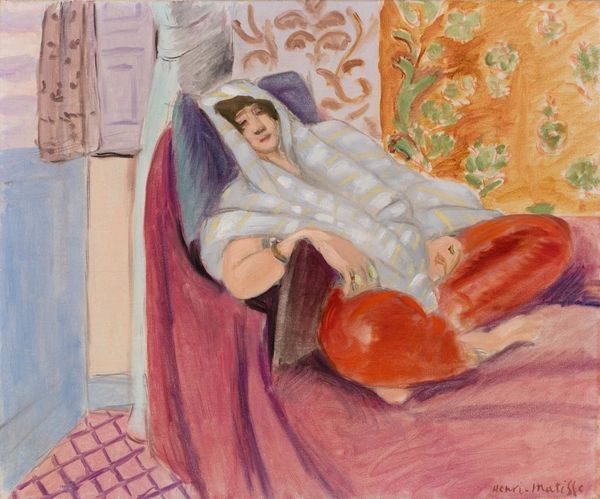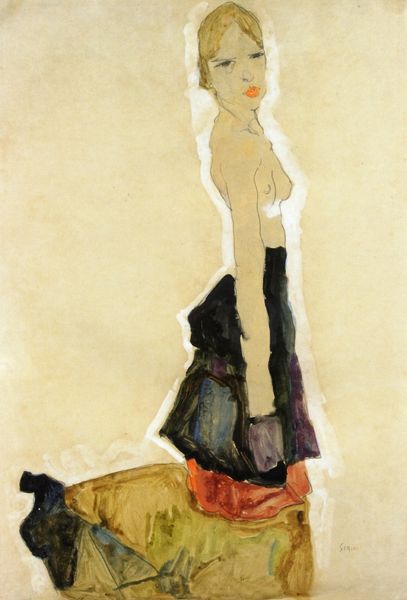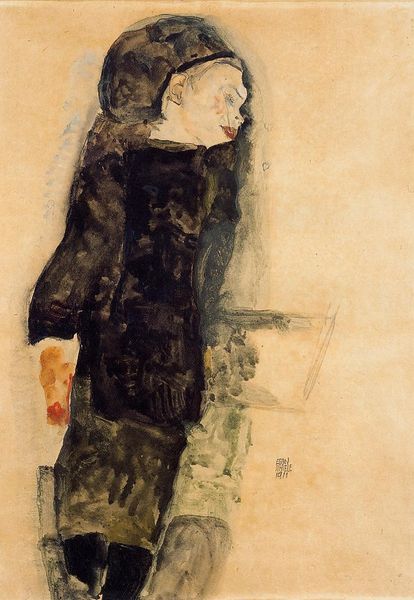
Copyright: Public Domain: Artvee
Editor: We’re looking at Charles Demuth’s 1915 watercolor, "Nana Visiting her Friend Satin." The title has such a specific intimacy to it, yet the scene feels almost voyeuristic and secretive, not welcoming. What do you see in this piece? Curator: What strikes me is how this watercolor transcends the domestic scene it depicts. Think about the social context of 1915. Demuth, a gay man, portrays two women in a boudoir setting, which can be read as an exploration of gender and sexuality outside the restrictive norms of the time. Editor: I hadn't considered that. It’s interesting how he frames it. Does the medium—watercolor—contribute to this feeling? Curator: Absolutely. The fluidity and translucence of watercolor lends itself to portraying intimate moments and fleeting expressions. Look at how Demuth uses washes of color to create a sense of depth and atmosphere. It's both suggestive and revealing, right? The title itself is very suggestive of the performative nature of gender and sexuality in a way that reflects conversations in philosophy at the time. It also is suggestive of race with "satin". What could be seen in the contrast between the figures in this work? Editor: The one woman is dark skinned, while the other is lighter? Maybe? How does intimism relate? Curator: Exactly! Intimism focuses on private, domestic scenes but the key here is considering whose intimacies are rendered visible and on whose terms. Are we, the viewers, invited into this space, or are we intruding? Editor: So, the seemingly simple genre painting prompts questions about societal power dynamics and who gets to represent intimacy? Curator: Precisely! It’s not just about aesthetics. This work opens a dialogue on representation, visibility, and the complexities of identity within the early 20th century context. Editor: This really complicates my understanding of "intimism". I see how an exploration of art historical and contemporary theory sheds new light on a seemingly quaint scene. Curator: And I appreciate your insight as it really enlivened the possibilities to use new art historical knowledge to address current societal concerns.
Comments
No comments
Be the first to comment and join the conversation on the ultimate creative platform.
